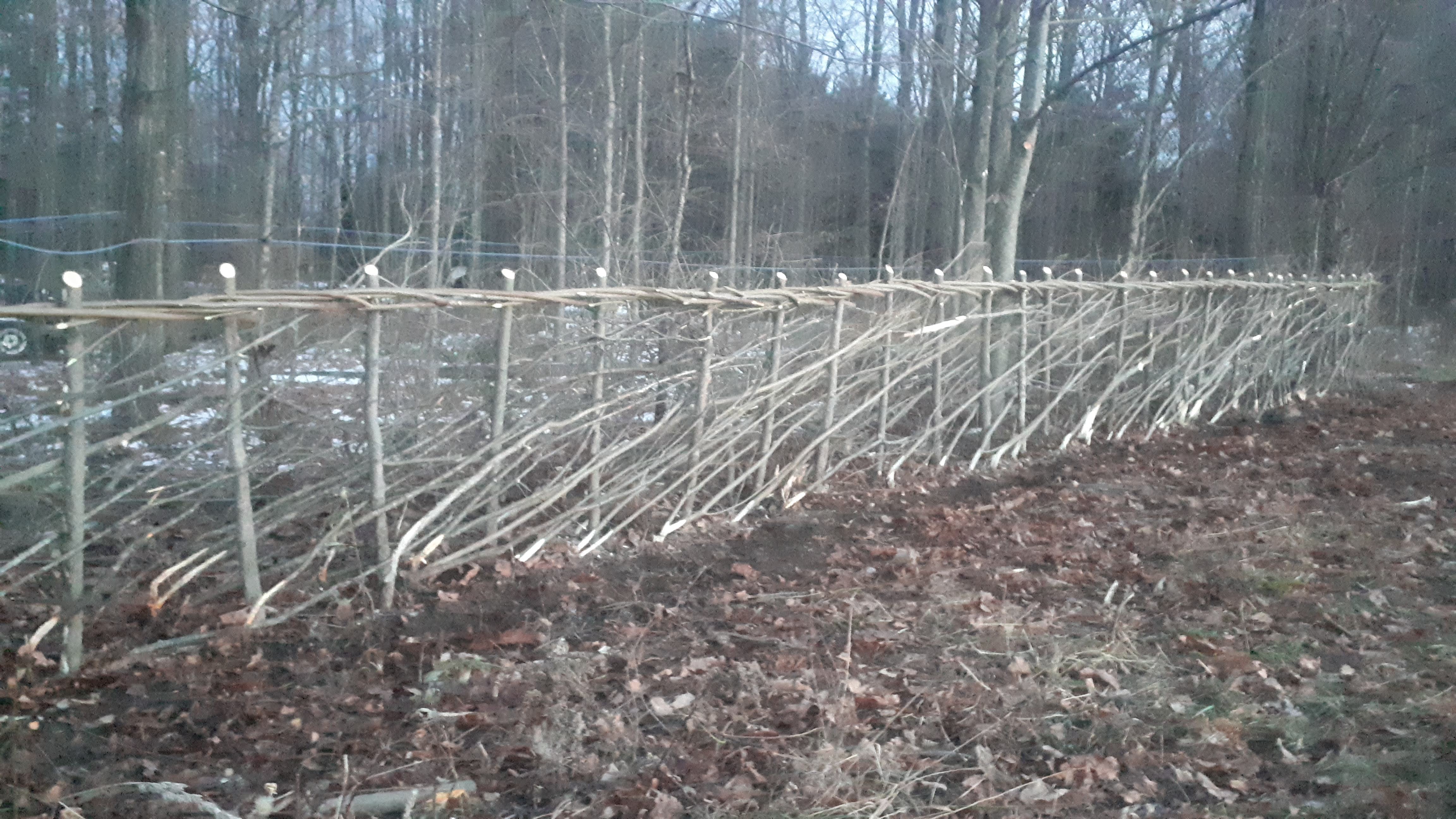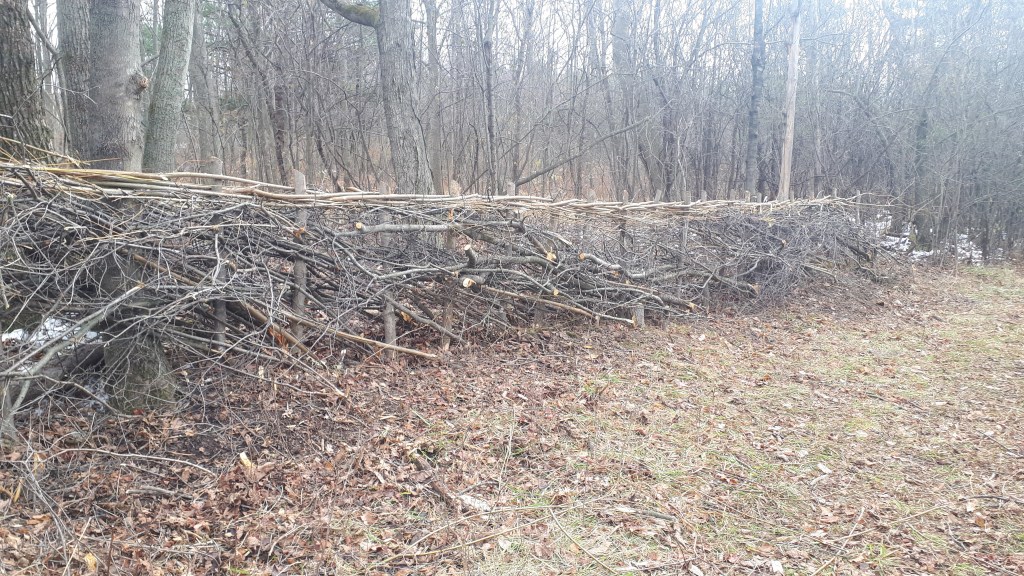” Hedgelayers do it in style!” may sound like an amusing bumper-sticker but it refers to one of the most fascinating features of this rural skill: that local differences exist in hedgerow management, called by the National Hedgelaying Society Regional Styles. There are more than 30 styles recorded in the UK, with more in Europe, according to the NHLS.
Hedgelaying in Europe has evolved over hundreds, perhaps thousands, of years in a process perhaps not dissimilar to that which drives the emergence of new species. The simple practice of cutting or bending stems to form a living fence is expressed differently as local ecology and geology, and the temperament of local people define it, with differing styles- and even the tools for the job- as an emerging property. Hedgelaying certainly came to the Americas with European settlers (although dead hedging was use by the First Nations, and some form of management may have existed…) but it seems to have died out, along with the planting of deciduous hedgerows outside gardens.



In the modern world, connection to the landscape and the local appears to be waning. The Hedgelaying in the Ontario’s Landscape project was started to explore, amongst other things, the relationship between people and the landscape through the practice of this rural skill. How might Ontarions interpret hedgerows and hedgelaying? How would it fit into the landscape where field boundary management is not a familiar practice?
One of the drawbacks for anyone wanting to learn and practice hedgelaying in the North American landscape is the paucity of good hedgerows. If you want to manage your hedgerow using hedgelaying techniques, you need a high frequency (approx 5/m) of stems in the 2-10cm width bracket, and really not much higher than 3-4m. For the traditional hedgelayer this paucity represents a serious drawback. However, as I am learning, thelack of ‘good’ hedgerows can be navigated with a bit of imagination!
Last weekend professional hedgelayer Nigel Adams and I taught 17 people to lay ‘hedgerows’ at Wellspring Forest Farm in New York State. We had seen the materials we would be working with on video thanks to owner Steve Gabriel but what looked reasonable on film didn’t translate well to reality. Seeing the woodland edge with many mature trees and a section of patchy invasive European buckthorn scrub we tried not to be dispirited but it seemed like it would be a hard job to produce anything resembling a well layed hedge. Having taught workshops already in Ontario, I think I had been more prepared for the North American hedgerow context than Nigel. Then Steve showed us a line of willows along a raised bank which, although a little short, was enough to raise our spirits. We also found two sections of woodland edge with a fair number of stems. After a good nights sleep Nigel felt better about our hedges and even decided that we should increase the number of stems in the hedge by pushing in cut willow branches from our binder pile- we had more than enough. Not something you would see in the National Hedgelaying Championships in the UK!
The hedgerows we layed, in South of England and Midland styles, both made good living fences and were aesthetically pleasing, and it reinforced my belief that until new planted hedges mature, North American hedgelaying was perhaps going to be about bringing skills developed on European hedgerows to local contexts, not being afraid to break rules and try new things. The interplay of skills and new contexts will hopefully allow new styles to emerge.




Yesterday as I continued to research the history of hedgerows and hedgelaying on this continent, I came across the work of Dr Johann D. Schoepf (1752-1800), a German-born physician and botanist who wrote about his travels in North America in “Travels in the Confederation (1783-4)”


Its clear then from Dr Schoepf’s writing that the methods of hedgelaying we practiced this weekend were even in 1783 the ‘Style’ in North America: inter-planting stems where they didn’t exist and finding stems ‘standing together as much as possible’- in effect creating a hedge line out of a confusion of stems in the woodland edge or field boundary.
Something to think about as the interest in hedgerows and hedgelaying in North America continues to rise.





2 responses to “Hedgelaying North American Style with Dr Johann Schoepf (1783)”
[…] Our Hedgelaying workshops took place in November 2019 and were very successful! You can read all about them here. […]
[…] of past management- new growth arising from a stem at 45 degrees, indicating the hedge had been ‘layed’ at some point in its life. The hedgerow could tell its own fascinating […]